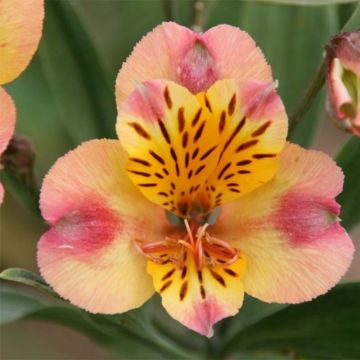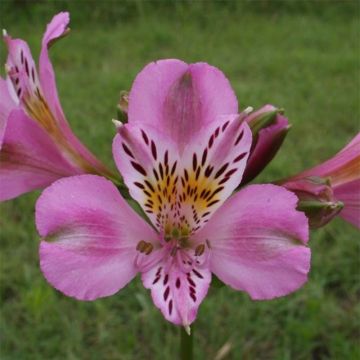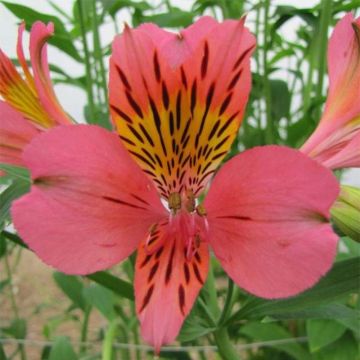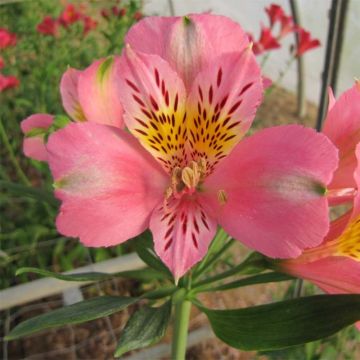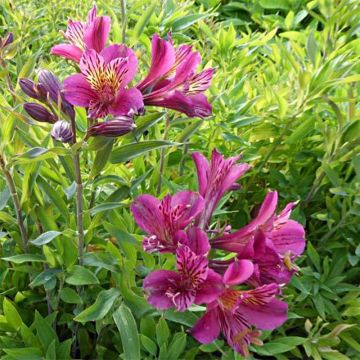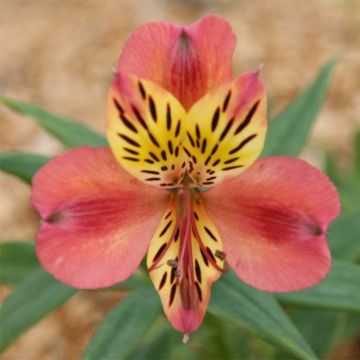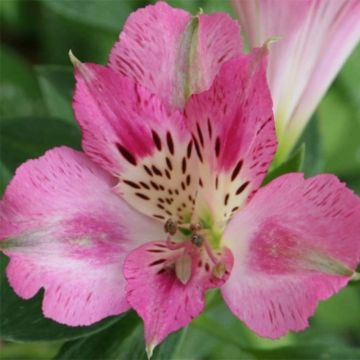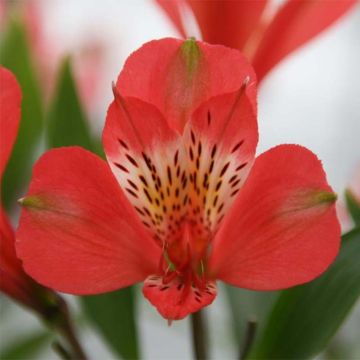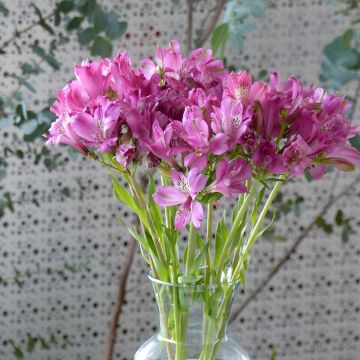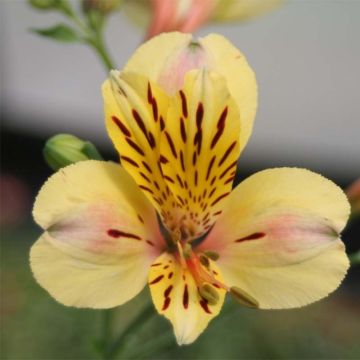Shipping country and language
Your country of residence may be:
Your country of residence is:
For a better user experience on our website, you can select:
Your shipping country:
Andorra
Austria
Belgium
Bulgaria
Canada
Chile
Croatia
Cyprus
Czechia
Denmark
Estonia
Finland
France
Germany
Greece
Hungary
Iceland
Ireland
Italy
Latvia
Lithuania
Luxembourg
Malta
Monaco
Netherlands
Poland
Portugal
Romania
Slovakia
Slovenia
Spain
Sweden
Switzerland
United Kingdom
We only deliver seed and bulb products to your country. If you add other products to your basket, they cannot be shipped.
Language:
French
German
Spanish
English
My Account
Hello
My wish lists
Plantfit
Log in / Register
Existing customer?
New customer?
Create an account to track your orders, access our customer service and, if you wish, make the most of our upcoming offers.
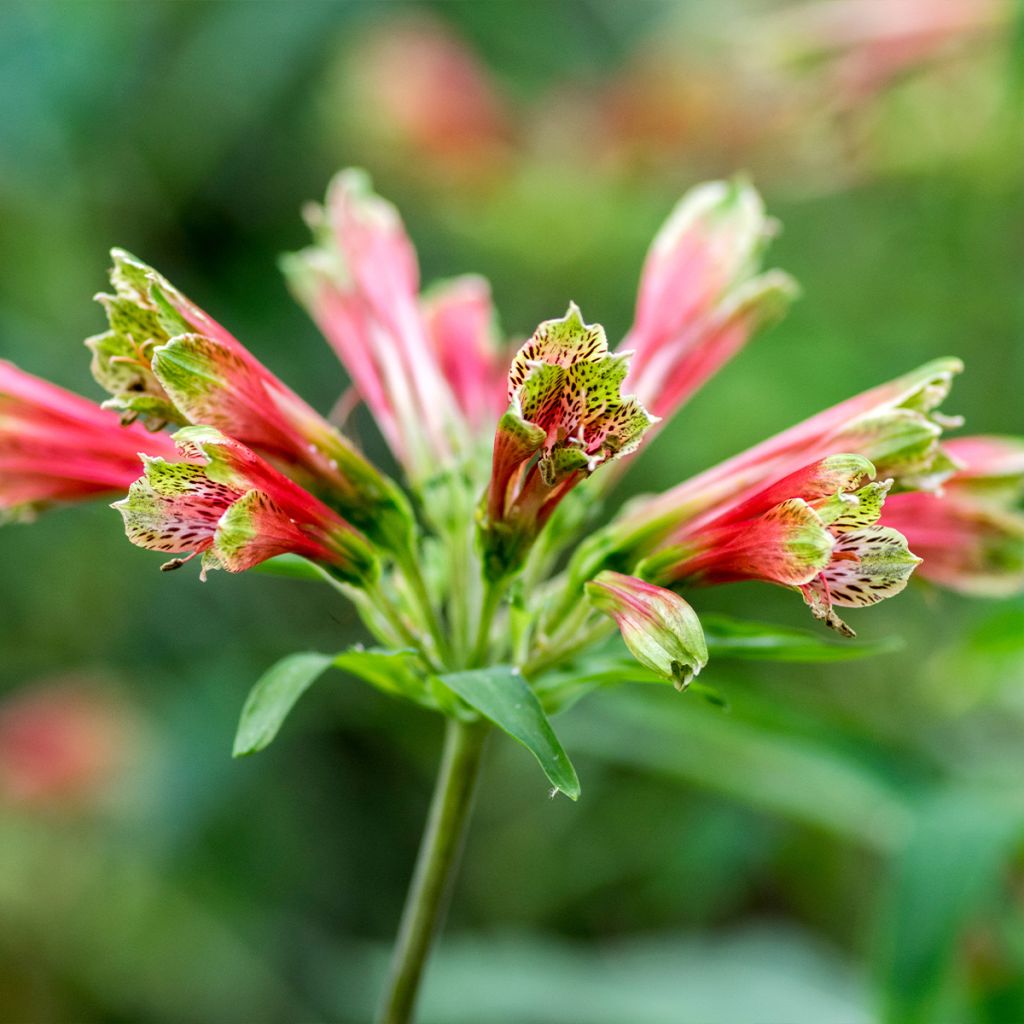

Alstroemeria psittacina - Lys des Incas, Alstroémère perroquet
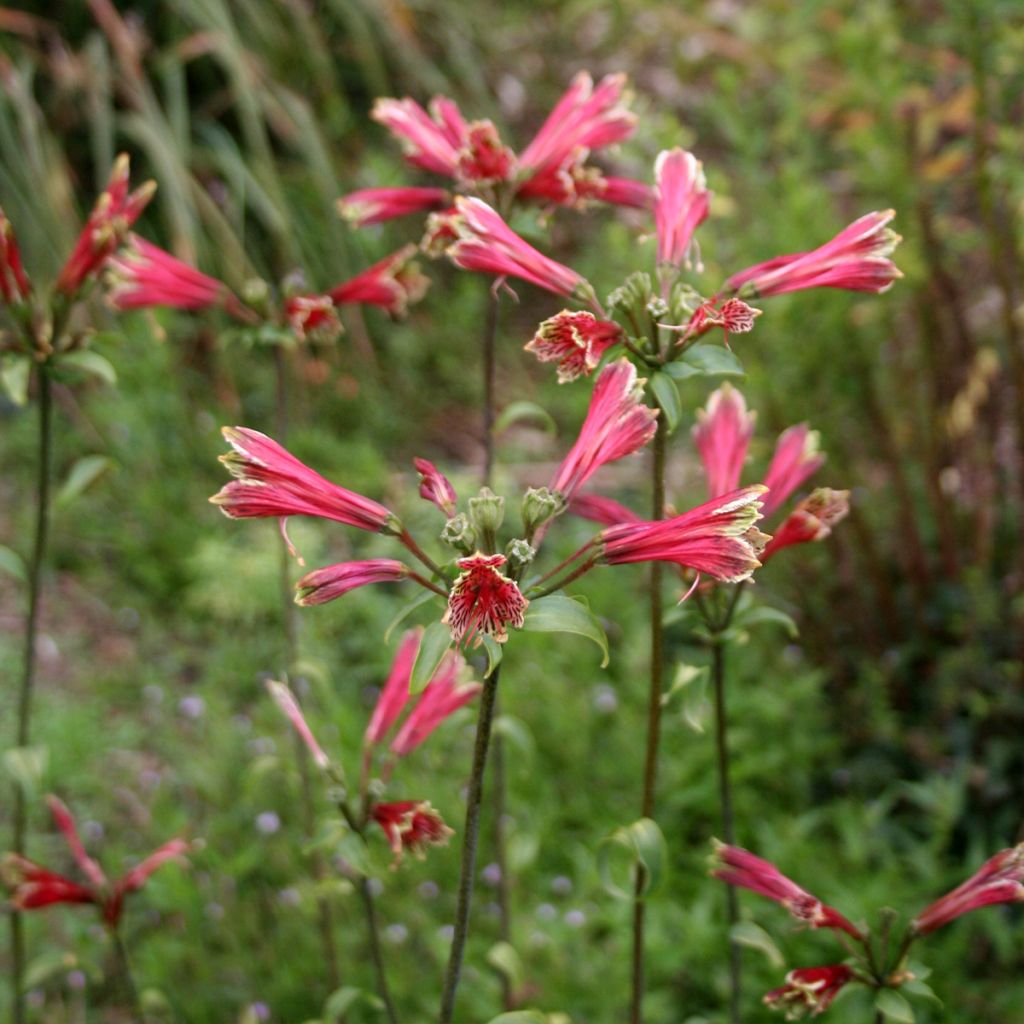

Alstroemeria psittacina - Lys des Incas, Alstroémère perroquet
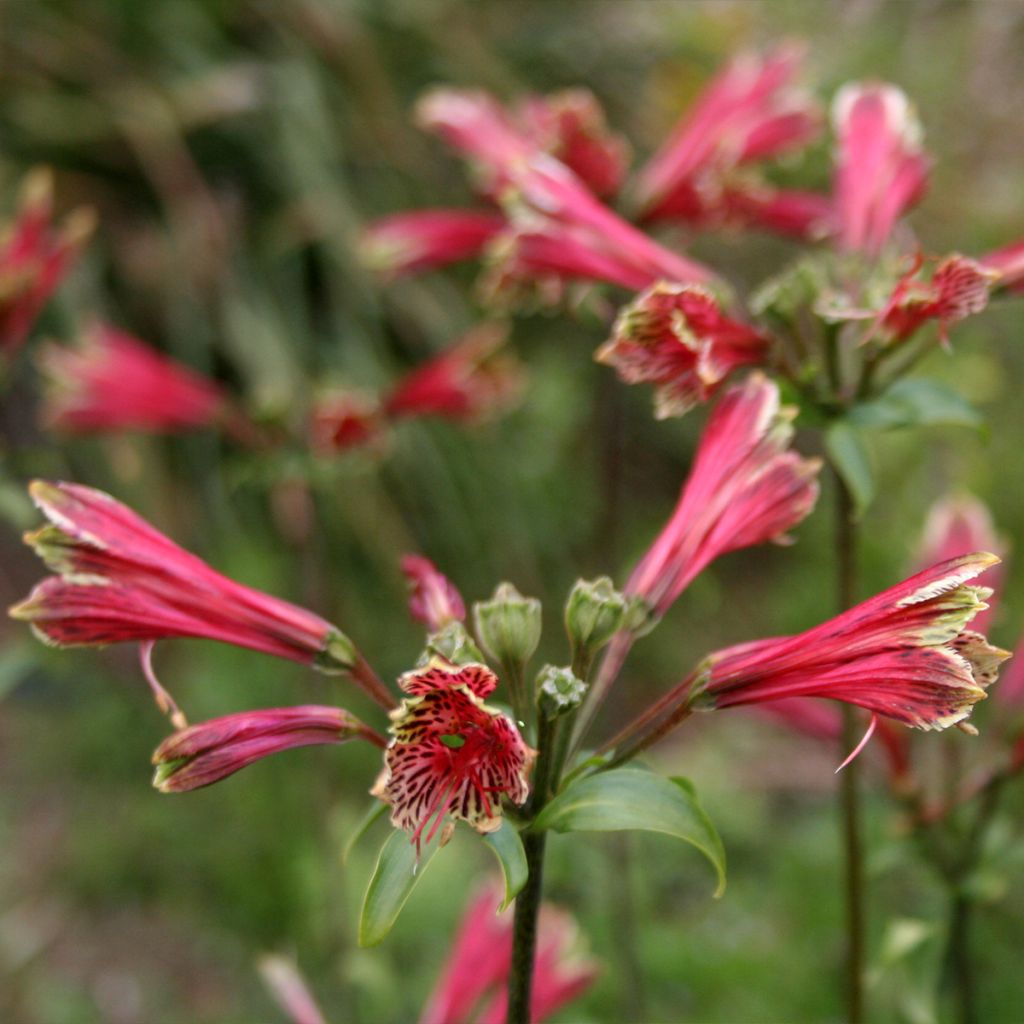

Alstroemeria psittacina - Lys des Incas, Alstroémère perroquet
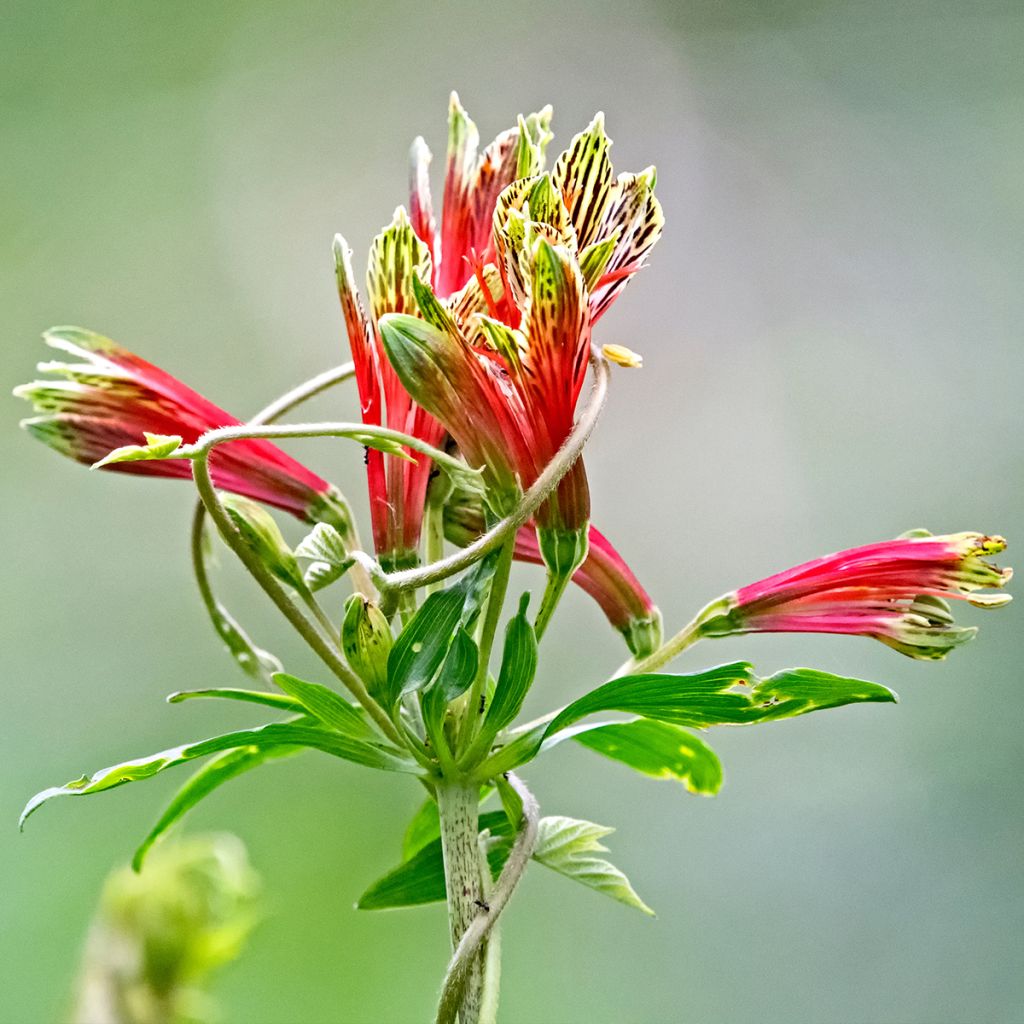

Alstroemeria psittacina - Lys des Incas, Alstroémère perroquet
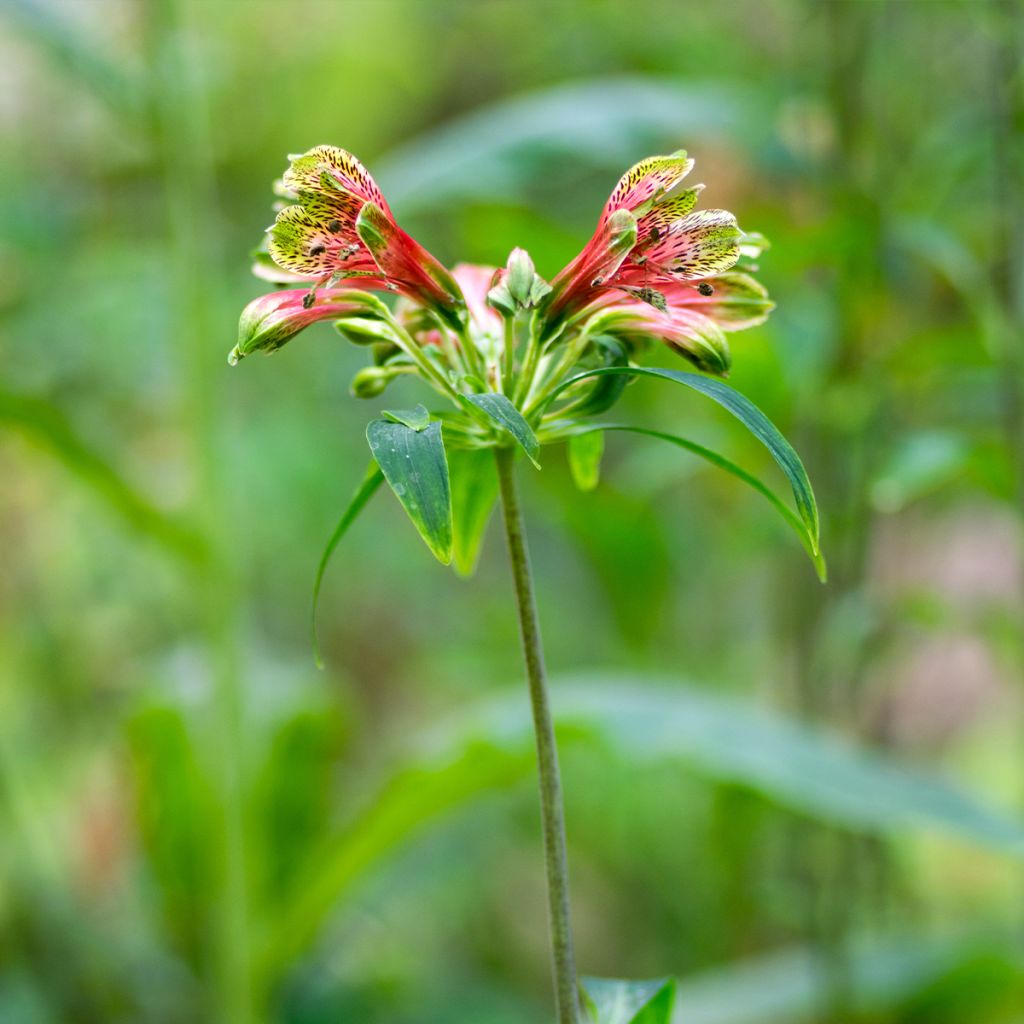

Alstroemeria psittacina - Lys des Incas, Alstroémère perroquet
Alstroemeria psittacina
Alstroemeria psittacina
White Edged Princess Lily, Peruvian Lily, Parrot Lily
Alstroemeria Psittacina: order arrived upside down, 5 naked young plants (including 1 empty) not identifiable as labels are mixed up, in the box. Is it the content of the empty bucket that arrived? I have a photo of the 4 plants planted whose name I do not know, in order to proceed by elimination...
Nathalie, 05/12/2022
Order in the next for dispatch today!
Dispatch by letter from €3.90.
Delivery charge from €5.90 Oversize package delivery charge from €6.90.
More information
This item is not available in your country.
Schedule delivery date,
and select date in basket
This plant carries a 12 months recovery warranty
More information
We guarantee the quality of our plants for a full growing cycle, and will replace at our expense any plant that fails to recover under normal climatic and planting conditions.
From €5.90 for pickup delivery and €6.90 for home delivery
Express home delivery from €8.90.
Does this plant fit my garden?
Set up your Plantfit profile →
Description
Alstroemeria psittacina is a particularly refined Inca lily, quite different from the classic varieties. It is also known as the Peruvian Lily, Parrot Flower, Parrot Lily, Princess Lily, or New Zealand Christmas Bell. It is recognizable by its much less open flowers, which are finely tubular, strongly coloured from crimson red to brownish purple on a green background. The flowers are beautifully enhanced by the emerald green foliage. This Peruvian lily is cultivated like its Inca lily cousins, in open ground in regions that are not too harsh in winter, or in a pretty pot. It tolerates partial shade well.
Alstroemeria psittacina (synonym Alstroemeria pulchella) is a perennial herbaceous plant with underground tubers from the Alstroemeriaceae family. This botanical species is native to eastern Brazil, Argentina, and Paraguay, where it is found in a tropical savanna habitat. The stump is composed of fleshy, weak trailing roots, which ensure its propagation over time. The plant forms a beautiful bushy clump reaching about 60 cm (24in) in height by 40 cm (16in) in width from spring onwards. The foliage consists of erect stems covered with leathery, lanceolate, narrow leaves of a beautiful emerald green. It usually flowers in June-July in our climates, but at Christmas in the southern hemisphere, such as in New Zealand, for example. It takes the form of terminal umbels, arising at the end of long tubular and powdery stems tinted with mauve-purple. Each umbel gathers 3 to 8 flowers. Each flower is a long narrow tube slightly flaring, of irregular shape. The edge of the petals is streaked with green and cream, on a more or less dark red background. The inside of the flower is streaked with dark red on a green background, the throat is orange-red. The above-ground, deciduous vegetation disappears in winter.
Alstroemeria psittacina, despite its strongly exotic appearance, is relatively hardy, down to -10 °C, and even more if the stump is well protected from moisture and excessive frost during winter. Its refined trumpet-shaped flowers create a colourful spectacle in flower beds or on the terrace in summer. For example, associate it with not too tall grasses, echinaceas, or lilies. The flowers of this Peruvian lily last 2 weeks in a vase.
Alstroemeria psittacina in pictures
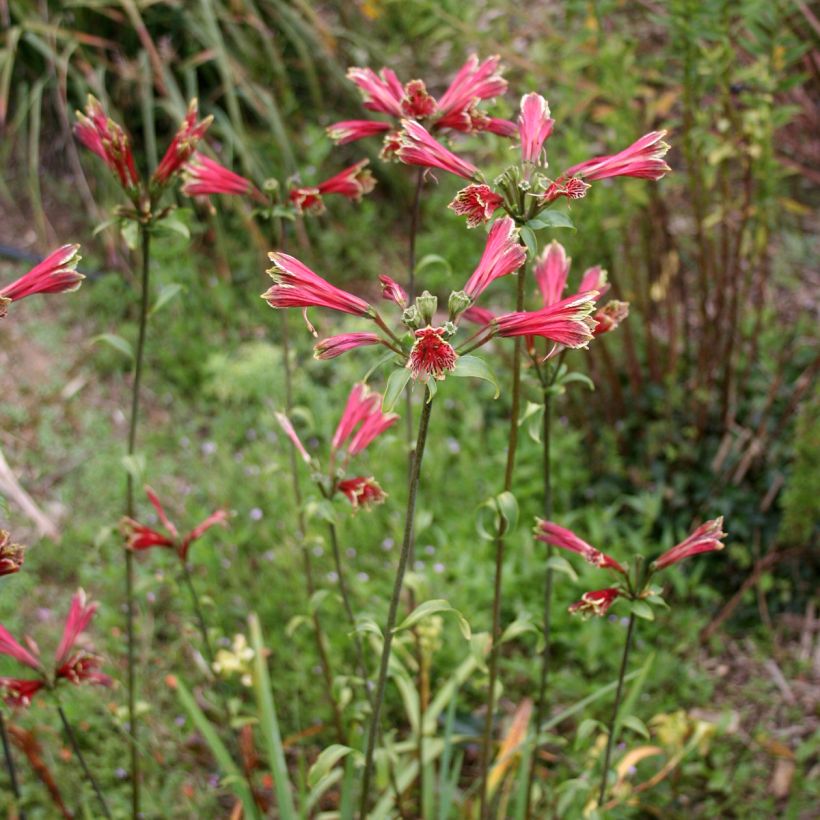

Flowering
Foliage
Plant habit
Botanical data
Alstroemeria
psittacina
Alstroemeriaceae
White Edged Princess Lily, Peruvian Lily, Parrot Lily
Alstroemeria (pulchella)
South America
Other Alstroemerias
Planting and care
Alstroemeria psittacina withstands temperatures as low as -10°C (14°F) if the soil is very well-drained. Protect the stump with a thick mulch as winter approaches. For any light, well-drained soil, in a region that is not too cold in winter and not too dry in summer. Plant the tubers carefully, as they are very fragile. This variety is planted in the sun in less sunny regions, but rather in partial shade under hot and very sunny climates. The soil should not completely dry out during the entire flowering period: water if necessary. Beware of attacks from slugs and other snails that are fond of young shoots.
Planting period
Intended location
Care
- , onOrder confirmed
Reply from on Promesse de fleurs
Haven't found what you were looking for?
Hardiness is the lowest winter temperature a plant can endure without suffering serious damage or even dying. However, hardiness is affected by location (a sheltered area, such as a patio), protection (winter cover) and soil type (hardiness is improved by well-drained soil).

Photo Sharing Terms & Conditions
In order to encourage gardeners to interact and share their experiences, Promesse de fleurs offers various media enabling content to be uploaded onto its Site - in particular via the ‘Photo sharing’ module.
The User agrees to refrain from:
- Posting any content that is illegal, prejudicial, insulting, racist, inciteful to hatred, revisionist, contrary to public decency, that infringes on privacy or on the privacy rights of third parties, in particular the publicity rights of persons and goods, intellectual property rights, or the right to privacy.
- Submitting content on behalf of a third party;
- Impersonate the identity of a third party and/or publish any personal information about a third party;
In general, the User undertakes to refrain from any unethical behaviour.
All Content (in particular text, comments, files, images, photos, videos, creative works, etc.), which may be subject to property or intellectual property rights, image or other private rights, shall remain the property of the User, subject to the limited rights granted by the terms of the licence granted by Promesse de fleurs as stated below. Users are at liberty to publish or not to publish such Content on the Site, notably via the ‘Photo Sharing’ facility, and accept that this Content shall be made public and freely accessible, notably on the Internet.
Users further acknowledge, undertake to have ,and guarantee that they hold all necessary rights and permissions to publish such material on the Site, in particular with regard to the legislation in force pertaining to any privacy, property, intellectual property, image, or contractual rights, or rights of any other nature. By publishing such Content on the Site, Users acknowledge accepting full liability as publishers of the Content within the meaning of the law, and grant Promesse de fleurs, free of charge, an inclusive, worldwide licence for the said Content for the entire duration of its publication, including all reproduction, representation, up/downloading, displaying, performing, transmission, and storage rights.
Users also grant permission for their name to be linked to the Content and accept that this link may not always be made available.
By engaging in posting material, Users consent to their Content becoming automatically accessible on the Internet, in particular on other sites and/or blogs and/or web pages of the Promesse de fleurs site, including in particular social pages and the Promesse de fleurs catalogue.
Users may secure the removal of entrusted content free of charge by issuing a simple request via our contact form.
The flowering period indicated on our website applies to countries and regions located in USDA zone 8 (France, the United Kingdom, Ireland, the Netherlands, etc.)
It will vary according to where you live:
- In zones 9 to 10 (Italy, Spain, Greece, etc.), flowering will occur about 2 to 4 weeks earlier.
- In zones 6 to 7 (Germany, Poland, Slovenia, and lower mountainous regions), flowering will be delayed by 2 to 3 weeks.
- In zone 5 (Central Europe, Scandinavia), blooming will be delayed by 3 to 5 weeks.
In temperate climates, pruning of spring-flowering shrubs (forsythia, spireas, etc.) should be done just after flowering.
Pruning of summer-flowering shrubs (Indian Lilac, Perovskia, etc.) can be done in winter or spring.
In cold regions as well as with frost-sensitive plants, avoid pruning too early when severe frosts may still occur.
The planting period indicated on our website applies to countries and regions located in USDA zone 8 (France, United Kingdom, Ireland, Netherlands).
It will vary according to where you live:
- In Mediterranean zones (Marseille, Madrid, Milan, etc.), autumn and winter are the best planting periods.
- In continental zones (Strasbourg, Munich, Vienna, etc.), delay planting by 2 to 3 weeks in spring and bring it forward by 2 to 4 weeks in autumn.
- In mountainous regions (the Alps, Pyrenees, Carpathians, etc.), it is best to plant in late spring (May-June) or late summer (August-September).
The harvesting period indicated on our website applies to countries and regions in USDA zone 8 (France, England, Ireland, the Netherlands).
In colder areas (Scandinavia, Poland, Austria...) fruit and vegetable harvests are likely to be delayed by 3-4 weeks.
In warmer areas (Italy, Spain, Greece, etc.), harvesting will probably take place earlier, depending on weather conditions.
The sowing periods indicated on our website apply to countries and regions within USDA Zone 8 (France, UK, Ireland, Netherlands).
In colder areas (Scandinavia, Poland, Austria...), delay any outdoor sowing by 3-4 weeks, or sow under glass.
In warmer climes (Italy, Spain, Greece, etc.), bring outdoor sowing forward by a few weeks.
